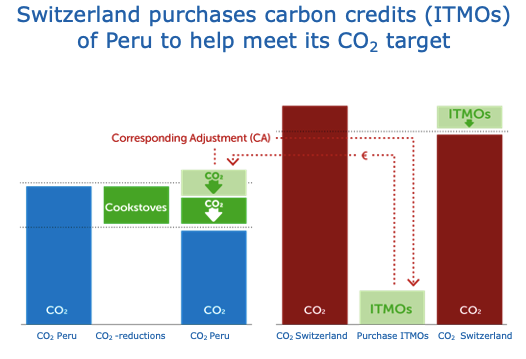Opinion: Voluntary Carbon Markets Do What the UN Cannot
Mid-year climate talks have wrapped up without progress on how the UN should manage international carbon markets. That’s fine because the UN shouldn’t be trying to micromanage markets, says former negotiator Jos Cozijnsen.

27 June 2021 | United Nations climate boss Patricia Espinosa had her game face on at mid-year climate talks, which wrapped up June 18 after more than two weeks of online negotiations.
“While a significant amount of work remains, good progress has been made on many issues,” she told reporters.
That may be, but it’s not the case with carbon markets, where negotiators have simply dug into the same positions they’ve held for years.
“The mindset of engagement will need to change if progress on difficult issues is to be achieved this year at Cop26,” said Tosi Mpanu Mpanu, chair of the Subsidiary Body for Scientific and Technological Advice (SBSTA), in the closing plenary.
To promote a positive outcome at the November climate talks in Glasgow (COP26), the United Kingdom will gather 40 ministers on July 23rd in London to discuss carbon market issues. These talks will be led by the ministers of Singapore and Norway, two countries that themselves also want to utilize carbon markets.
Sadly, I doubt this will ultimately provide the clear guidance countries seek.
That’s because climate talks are politically sensitive, with many competing interests, and the arguments that keep blocking progress have little if anything to do with the technical issues involved in creating a robust global carbon market.
Put simply: that’s not what the United Nations is good at, and it’s not something they should be trying to do. The UN should limit its work to establishing accounting rules and the rules for reporting by countries, but leave the nitty-gritty issues up to individual countries and voluntary carbon markets.
There is precedent for this: the European Union has built a thriving market on the Kyoto Protocol’s Clean Development Mechanism (CDM) – namely, the European Union Emissions Trading Scheme (EU ETS) – despite the UN’s inability to correct the well-documented problems of the CDM itself. That’s because the UN did what it does best – creating basic universal rules – but letting the European Union develop its own market within those rules. At the same time, voluntary carbon markets have evolved quite nicely without micromanagement, and they even pioneered many of the practices governments are now implementing around the world.
Unresolved Issues
The UNFCCC left plenty of unresolved issues on the table, many of which are delineated in an informal note published at the end of the event. Here is a breakdown:
- Guidance for nations that want to trade surplus emission reductions, called “Internationally Transferred Mitigation Outcomes” (ITMOs) under Article 6.2 of the Paris Agreement. other than transparency and double-entry bookkeeping, so that it is clear reductions are counted only once and by one country to comply with an obligation. The ITMO transferring country is to ‘correspondingly adjust’ (CA) the emissions reductions from its report. See how Switzerland and Peru are preparing to meet such demands in their recent CO2 deal.
- Guidance on how a new centralized carbon credit program can ensure global reductions and learn from flaws of the CDM (Article 6.4 of the Paris Agreement).
- The fate of the remaining billions old Kyoto-period CDM credits. I would propose to cancel one-third, bailout one-third, and transition one-third to the more ambitious Art 6.4 mechanism.
Here is a summary of the views that I saw resurfacing throughout the talks, as well as my comments on what they mean:
Expressed View: ‘Let’s wait with decisions on Articles 6.2. and 6.4 until there is more progress on ‘non-market-based options’ (Article 6.8).
My Take: Why wait? Countries are free to choose any option they prefer, and we don’t need to have all alternative approaches finalized before using carbon markets.
Expressed View: ‘We should apply share of proceeds (SOP) on Article 6.2′.
My Take: That demand doesn’t make sense. It is fair to apply a fee on a credit mechanism like Article 6.4, as was the case with the CDM to collect funding for adaptation, but adding a fee to each ITMO transfer burdens the trade and is not needed as nations that make use or cross border trade and regional emissions trading systems usually already donate to the Adaptation Fund with revenues of auctioning trading system allowances.
Expressed View: ‘We should wait for guidance on carbon trade until developing countries are transparent on the implementation of the Paris Agreement and how they meet their targets.
My Take: Without any support, it is hard for developing countries to report on all their emissions for the first time and to predict how and if they will meet their National Determined Contribution (NDC) target. Against this background, it’s difficult to correspondingly adjust IMTOs from their account. There are exceptions, of course. It’s worthwhile for some more advanced developing countries like Peru, which is establishing an emissions budget to track progress and wants to operate an ITMO transfer registry, but that is the exception. For others, there is the international meta registry that Markit is preparing and the voluntary carbon market, which establishes transparency of emissions and reductions that help meet their national target. (Editor’s notes: other efforts to unify registry data are underway including the World Bank’s Climate Warehouse and Ecosystem Marketplace’s complementary build-out of its trade accounting and reporting platform EM Global Carbon Survey). In my view, the voluntary carbon market (VCM) does not need to wait for UNFCCC decisions, as corresponding adjustments are designed to avoid double counting amongst countries and not among entities (see my earlier column on Ecosystem Marketplace on this).

Countries can already make use of transferred mitigation outcomes under Article 6.2 as long as they are transparent and apply double-entry bookkeeping
More is expected outside the UN regime from a carbon club of countries that cooperate in making use of carbon markets to help meet CO2 targets or link their emissions trading systems. The EU Commission and the United States as well as Germany have indicated their interest in working with carbon clubs.
Also, the independent voluntary carbon market can help meet nations meet domestic CO2 targets. For example, investing in a cookstoves project in Tanzania can help Tanzania meet its NDC target. By purchasing voluntary carbon credits, companies can compensate for the impact of their remaining residual greenhouse gas emissions, in addition to reducing their own avoidable reductions, as this paper from the International Carbon Reduction and Offset Alliance (ICROA) makes clear.
Please see our Reprint Guidelines for details on republishing our articles.

